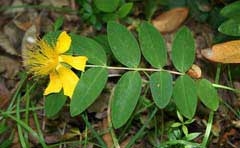Rudolf Steiner (if you don't know him, look him up!) had ideas that the three most important ways for humanity to reach further evolution were: 1. That people stop working for money. 2 That people realize there is no difference between sensory and motor nerves and 3. The heart is not a pump.
After reading the latest addition to my personal library, Human Heart, Cosmic Heart by one of my personal heroes, Dr. Thomas Cowen, MD and anthroposophical physician, I felt very called to bring further awareness to his research and try and give a very oversimplified summary of the information presented in this book, with a sincere hope to inspire further curiosity in readers that might lead to improved health benefits and disease prevention.
I'll try and boil it down for you. The true causes of heart disease are as follows: Hypertension, smoking, diabetes, physical & emotional stress, a sedative lifestyle and a poor diet. Don't roll your eyes at me yet. The exciting and new revelation about these causative factors is that they are causing heart attacks, not because of blocked arteries, because of cholesterol, (According to Dr. Cowen, more than 50% of people that have heart attacks don't have sufficient stenosis as to cause a heart attack) but because these factors are throwing off balance in the sympathetic nervous and parasympathetic nervous systems. Dr. Cowan points to four studies showing that "patients with ischemic heart disease have, on average, a reduction of parasympathetic activity of more than a third. Typically, the worse the myocardial infarction, the lower the parasympathetic activity" (56).
Basically, if you are chronically in "fight or flight", your body is always using it's sympathetic nervous system and unable to rest and heal from the parasympathetic nervous system. Heart attacks do not occur in people with healthy parasympathetic activity whom experience high levels of stress. It is only when the parasympathetic nervous system is chronically unable to nourish itself and that its overall activity is reduced, or down-regulated due to poor lifestyle choices, which leaves a person suffering from severe stress very vulnerable to a myocardial infarction.
When the person with a lowered parasympathetic activity is exposed to severe stress (emotional or physical), the increase in adrenaline directs the cells of the heart to break down glucose (sugar) using aerobic glycolysis, rather than it's preferred fuel of ketones and fatty acids.. Dr. Cowan states that "[a]s a result of the sympathetic increase and resulting glycolysis, there is a dramatic increase in lactic acid production in the myocardial cells... This increase in lactic acid results in localized acidosis, which makes calcium unable to enter the cells and the cells less able to contract". This causes edema and diminished muscle function and the build up of lactic acid in the cells leads to cell death "which we call a heart attack". (58)
Dr. Cowan states that "known things that nourish our parasympathetic nervous system are contact with nature, loving relations, trust, economic security, and sex". He stresses the importance of a diet high in good quality fats (especially grass fed butter) and low in sugar and refined carbohydrates.
A simple theory- and yet it makes more sense than anything else I've ever read in medical texts or physiology books. Dr. Cowan's book also provides the most shocking, yet naturally logical scientific theory on the role of the heart. He talks about Steiner's theory about the heart as a seven sided form in a box as well as the fourth phase of water.
To quickly summarize, when water is exposed to sunlight, the earth's energy, or energy from other living things, and touching a hydrophilic surface, it forms a fourth phase in which the water touching the hydrophilic surface becomes negatively charged in relation to the water not touching the surface. The negatively charged water excludes any toxins or other particles. When that hydrophilic surface is a tube (such as in our circulatory systems) a perpetual motion "machine" is created in that the positively charged water in the center is propelled upwards.
Our heart isn't really "pumping" blood at all- in fact, when our blood reaches the capillaries, it stops and then gradually picks up speed again as it heads back for the heart. It is the structure of the water in our cells that propels our blood, not the heart. Dr. Cowan agrees with Steiner, who suggested that the heart is more like a hydraulic ram. In allowing the chambers of the heart to fill with blood, create a negative pressure and then flow on and vortices are created.
I feel that I am still digesting and integrating this knowledge. I encourage everyone to read Dr. Cowan's book, "Human Heart, Cosmic Heart" for more information! I hope all of you will take the time after reading this to go outside for a forest walk, hug a loved one and enjoy a healthfully prepared meal together!










